PENELOPE GRANYCOME is not an underwater photographer, but that didn’t stop her looking, learning and enjoying a photo-workshop trip hosted by pro Mario Vitalini on the liveaboard Hurricane in the southern Egyptian Red Sea.
Diving involves choice, and it can be difficult to select between taking a well-finned path or some entirely new adventure. As a fan of both the Red Sea Wrecks & Reefs and Brother Islands/Daedalus shark itineraries, for a post-pandemic break I was craving a trip with elements of the familiar but also something novel.
Also read: Diving on and between Red Sea wrecks
The solution came in the form of a “Corals, Caves and Critters” underwater photography itinerary offered by Scuba Travel under the tutelage of Mario Vitalini on the sturdy Hurricane. The liveaboard had been refitted during the pandemic, and it was a joy to be aboard again to see the new pale wood-finished interior making it look a class act.
Seeing familiar faces made it feel as if no time had passed, and the crew and guides would prove as wonderful as ever, with nothing ever too much trouble and everything made fun.
The southern Egyptian Red Sea areas of St John’s, Fury Shoals and surrounding sites had been on my wish-list, and I was assured that my being a non-photographer would not be an issue. But watching how the photographers developed through the week while also appreciating the underwater world through their eyes and Mario’s enhanced my perception of the glorious flora and fauna, spectacular cavern swim-throughs dappled in light, huge pinnacles and coral gardens rich in life.
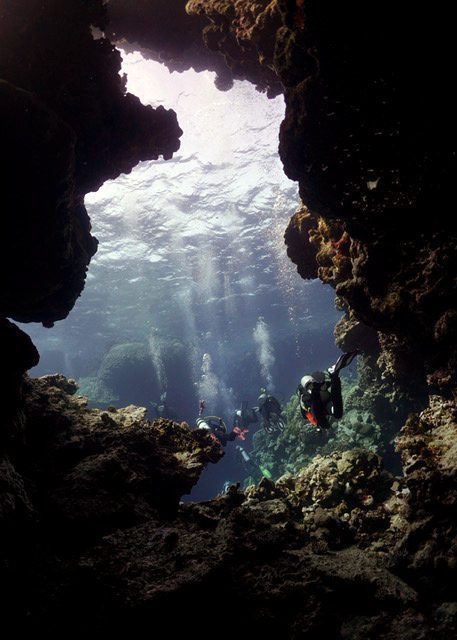
Check-dive
Departure from Port Ghalib took us to the check-dive at Abu Dabab III north of Marsa Alam, a long, pleasurable dive with amazing vis, followed by a second dive on which we were dropped from the Zodiac into a mild drift.
The gorgeous hard coral and light provided a flavour of what lay ahead, and a night dive in the same location spoilt us with sightings of a big Spanish dancer, lionfish and nudibranchs. The route back to Hurricane was easy, courtesy of a huge underwater light designed by one of the divers.
To stimulate the photography mindset before delving into more technical detail, Mario’s first evening talk covered ambient lighting, the pitfalls of of over-exposure and the best ways of using the sun (always behind you) as well as ISO and white-balance settings to mitigate colour absorption under water.
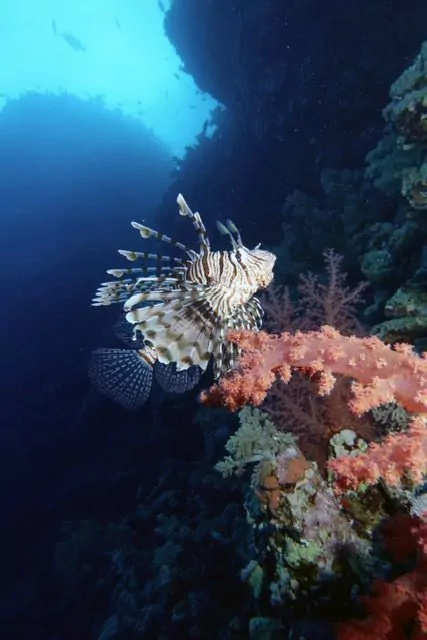
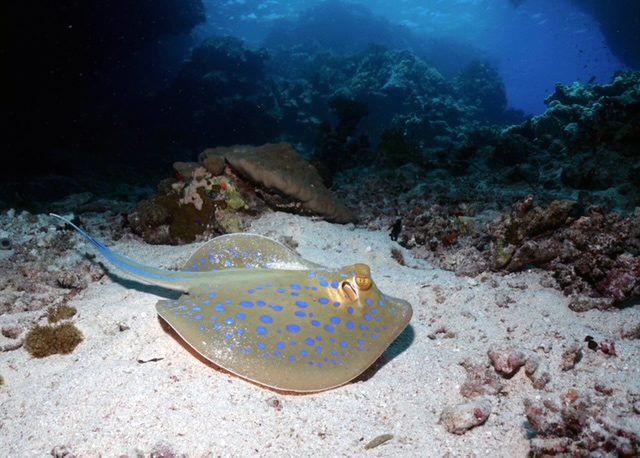
Even with the simplest camera set-up, rewarding results can be obtained with the right tweaks, and the next day at Sha’ab Malahi (our first stop at Fury Shoals) provided the perfect opportunity on an exquisite nature-lit dive through an open pinnacle system. We were guided by expert Reda, an old friend and one of the Red Sea’s best-loved guides – we posed together for a shot over a giant hard-coral dome.
Moving slightly north to Abu Galauwa Soraya, we moored for two beautiful dives. The circuit could be made clockwise or anti-clockwise – either reef or sandy lagoon first. My buddy Kat and I started with the clockwise route via a sunken yacht before meeting fellow-divers on the reverse loop.
The lagoon topography consists of a vast sandy basin walled by cliffs that give way to coral inlets, and a large moray reaching out of its crevice to provide numerous photo-opportunities where reef met lagoon.
Kat, a zoologist, underlined how when morays show their teeth it’s a sign not of aggression but of routine breathing activity. Still, best not to get too close… as well as bite-risk, they do emit toxins from their skin and mouths.
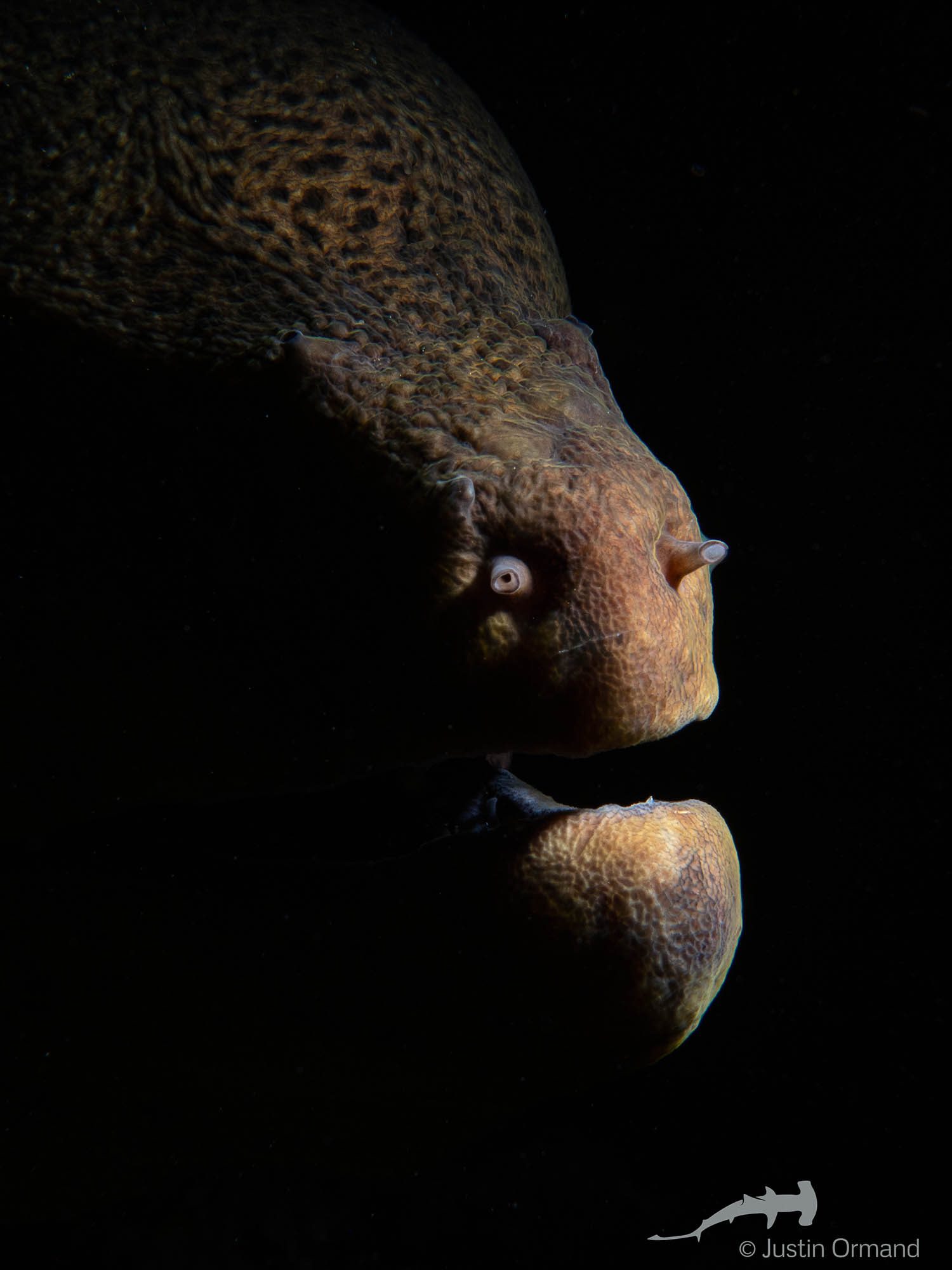

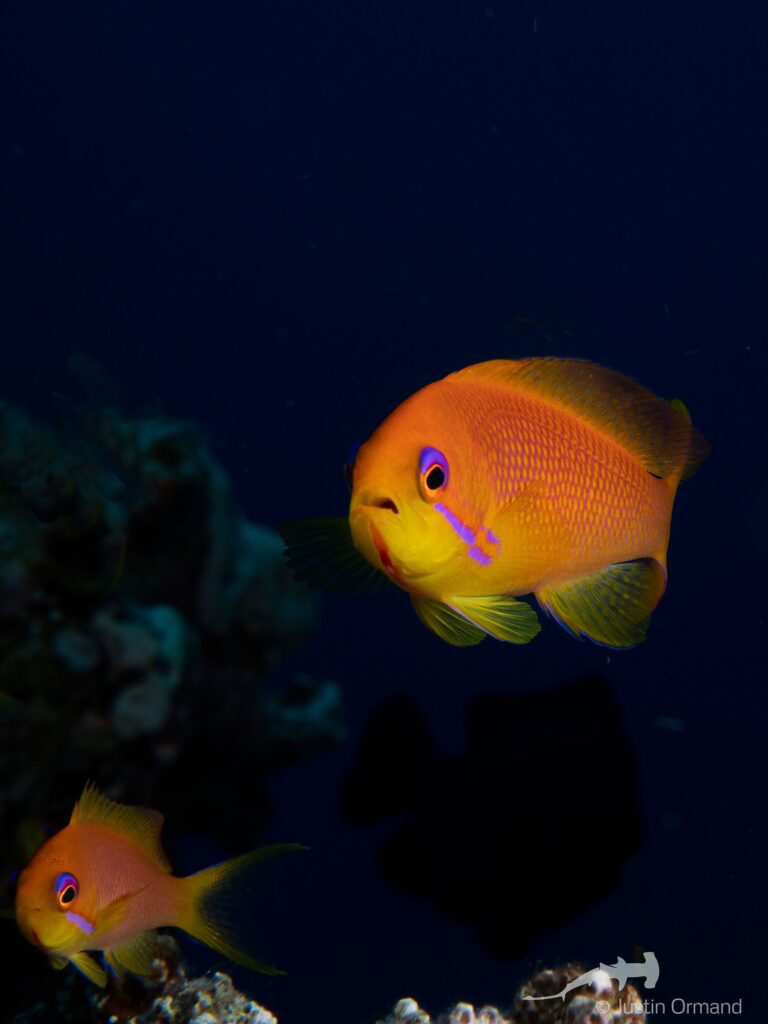
Interacting with and shooting fish was the topic of Mario’s talk that evening, with a segue into lighting using strobes. As with many living subjects it’s the eyes that are the key, a truth demonstrated in many award-winning shots, with the relationship, character and projected “mood” of the fish making or breaking the image.
Shooting upwards can be a game-changer, and Mario detailed light source and strobe positioning and went over how to avoid bland “fish ID” shots.
An overnight passage took us south to St John’s and Umm Arouk, where surface chop gave way to a pinnacle forest and some stunning photo ops. Most divers ignored the reef portion and hovered around the teeming pinnacles, watching octopuses, scorpionfish and an entertaining anenomefish display at about 20m.
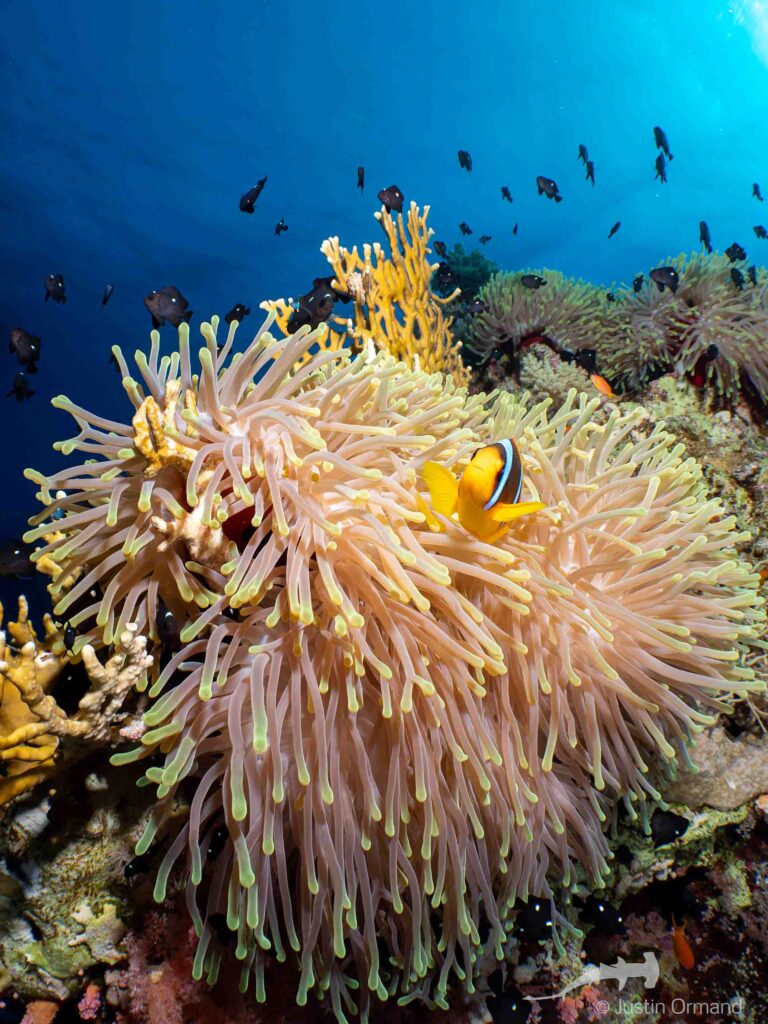
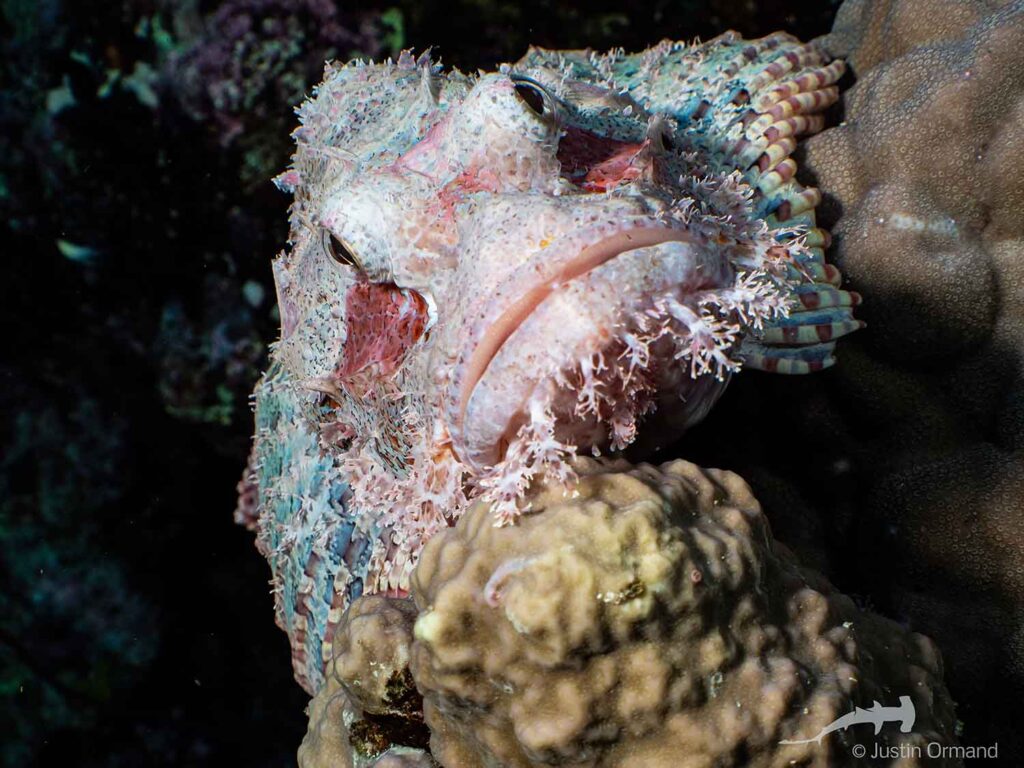
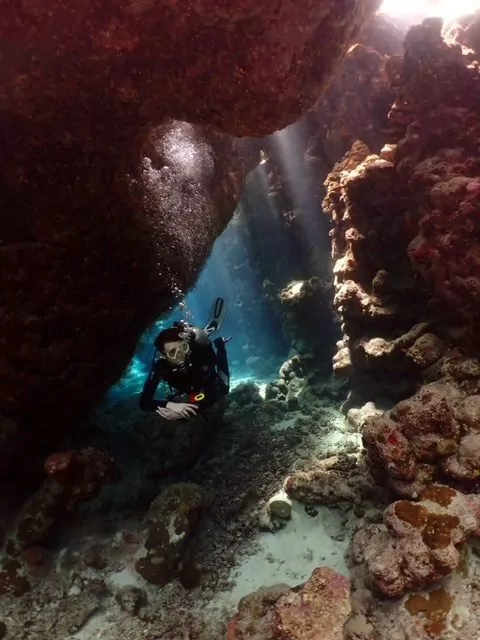
The site was so rich that many photographers opted to stay there throughout the day. Though surface chop continued there was still an option for the “ultimate” pinnacle dive at Habili Gaffar, several minutes’ ride away.
Negative entry
Five of us, including Mario and guides Reda and Mousa, headed out in big swells for a negative entry down one side of the habili, dropping into current and quickly finning into the lee. The seamount rises from a depth of more than 100m, forms a ledge at 70m then steeply rises to a 30m-diameter plateau about 3m below the surface.
This was an advanced dive because of the currents and surface surge, and it was important to stay close to the reef. It was thrilling, with shoals of barracuda and snapper and, from about 32m, a spectacular view upwards.
Reda and Mario headed off towards a shark in the blue while Mousa, the other diver Steve and I swam up and around to be rewarded with the sight of a huge green turtle.
Hitting current again and being less strong than the guys I signalled that I couldn’t fight it, and we slowly shallowed up into the swell to make our safety stop, the Zodiac on a line to the permanent reef buoy.
That evening Mario explored composition, the rule of thirds and more, and discussed directing divers as models for use in shots as a counterbalance to nature – which can be trickier than it appears! Using hand signals to convey “I need you to pose” and, depending on the lens, where and how close to get to the camera and where to put your eyeline as a diver doesn’t always happen by alchemy.
Dark blue light
Watching photographers working can be fascinating, and the following morning at a site called Gota Soghayar, a beautiful reef wall bathed in dark blue light with a huge resident male Napoleon wrasse, I watched Mario hover effortlessly as he aimed a macro lens into a tiny nook.
Then it was on to St John’s Caves and the first dives within a cavern system, with swim-throughs, a lagoon and narrow passages requiring excellent buoyancy to avoid kicking up the sand. A couple of the darker swim-throughs required torches and I would recommend guided dives to anyone visiting for the first time, because it takes off the pressure and allows you to take everything in with less chance of anyone getting lost.
A baby shark took its paparazzi moment and the unspoken rule not to hog any one subject for too long came into play.

The penultimate day of diving took us north again to Sha’ab Sataya, Dolphin House and an exquisite hour snorkelling with a huge pod of spinner dolphins, including mothers with calves. It was both exhilarating and exhausting trying to keep up with them, and intensely moving to see them play and hear them talk.
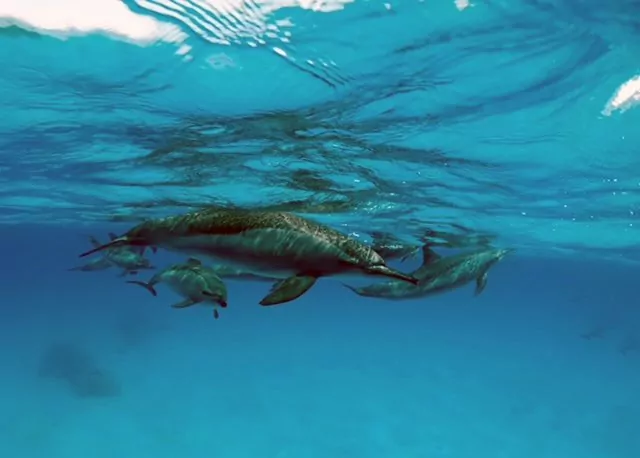
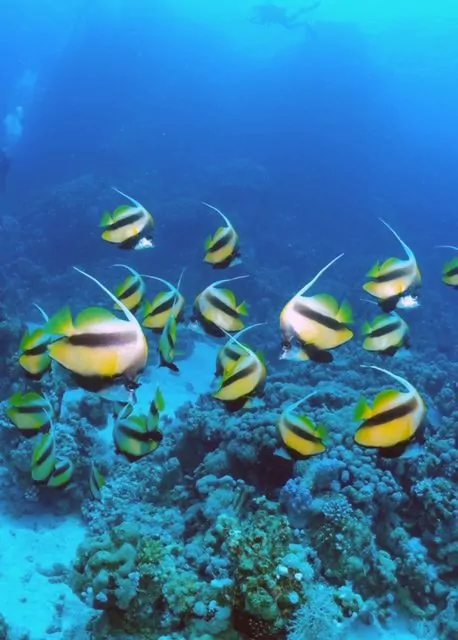
A breakfast refuel and it was on to three open-deck dives at the divine Sha’ab Claudio, another pristine cavern swim-through system at Fury Shoals. These dives were initially deeper than those at St John’s, as we swam up the reef teeming with bannerfish and then made our way into two smaller caverns resplendent with sunbeams shining through.
Kat captured a pair of spawning damselfish, the female turning back towards her as if to say: “Who the hell are you?!”
The final evening’s talk was about Adobe Lightroom and its scope, providing an insight into what can be corrected and improved using the application. I asked Kat, a WWF Freshwater Biodiversity Lead, why she had wanted to develop her photographic skills. “So I can play a part in highlighting freshwater ecosystems,” she told me. “I can assess my photos more critically – previously I was happy if they were in focus!”
Open-deck

Many of the later dives were open-deck (guests doing their own thing) and layered in with Mario’s passion for the importance of avoiding task-loading – he insists that excellent buoyancy and good air consumption are essential before divers even pick up a camera.
“I haven’t felt intimidated just using a compact camera,” said Kerry, one of the many divers who produced excellent shots during the week. “I have learnt lots and feel inspired.”
Our final day’s dives at Marsa Shouna, a 360m-wide sheltered bay, brought many turtles and, sadly, one we think might have ingested some form of plastic, because it appeared soporific or dazed. It was heart-breaking to see and we will never quite know what was wrong but, after experiencing so much beauty, it brought home just how much we need to protect every living organism in our seas.
Underwater photography, shot mindfully and carefully, can help.
The next Mario Vitalini photo workshop on Hurricane is likely to be a year away, but Scuba Travel’s ATOL-bonded Red Sea package holidays on the liveaboard include flights, transfers, seven nights’ onboard with full board, marine park fees, port fees, nitrox, tanks, weights and the last day in a hotel with buffet lunch – special offers start from £1,245. Find them here
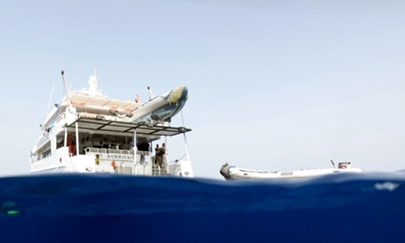

PADI Master Scuba Diver Penelope Granycome is a professional actress who learnt to dive in Oahu in 2008. Diving has taken her all over the world but she also enjoys both coastal and inland UK diving. She writes about both diving and well-being. On Divernet recently: Flying High Under Water: Rob Franklin

